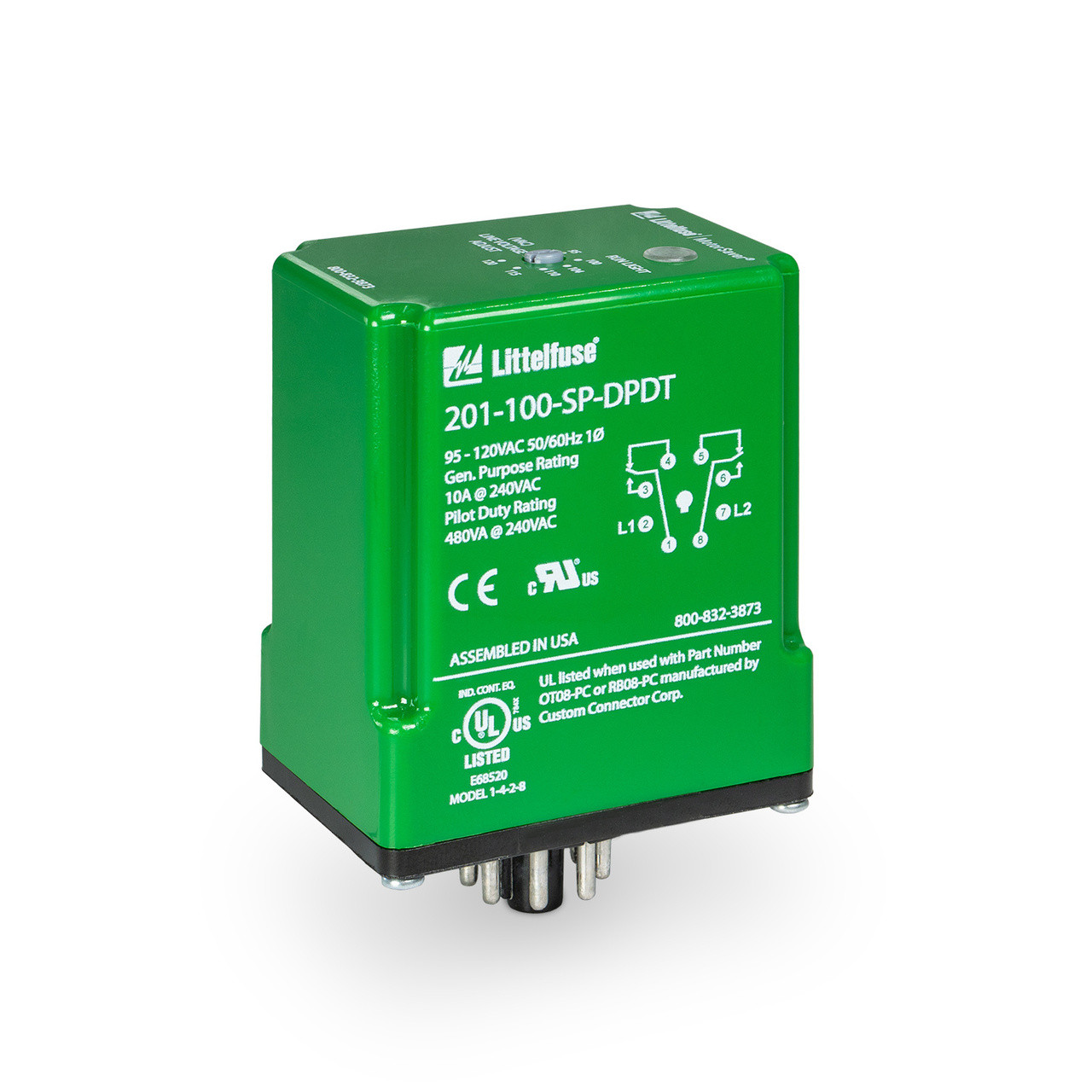Product Description
Description: 1-Ph 8-Pin Plug-in VM/95-120V/DPDT
| Product Information | Resources |
|
| Specifications |
| Product Attribute | Attribute Value |
| Input Voltage (V) | 95 - 120 Vac |
| Maximum Input Power | 5 |
| Input AC Line Frequency (Hz) | 50 / 60 (50 will increase all delay timers by 20%) |
| Output Form | DPDT |
| Output Load Rating (VA) | Pilot Duty: 480 VA @ 240 Vac; General Purpose: 10 A @ 240 Vac |
| Restart Delay Range | After a Fault or Complete Power Loss: 2 s |
| Trip Delay Range | Low Voltage: 4 s |
| Trip Point Accuracy (%) | ±1% |
| Undervoltage Trip Voltage | 0.9 |
| Undervoltage Reset Voltage (%) | 0.93 |
| Voltage Unbalance Reset (%) | 0.045 |
| Termination Type | Torque: 12 in-lbs.; 12 - 22 AWG solid or stranded |
| Mounting Method | DIN rail or surface mount (plug into OT08-PC socket) |
| Operating Temperature | -20° to 70°C (-4° to 158°F) |
| Storage Temperature (F/C) | -40° to 80°C (-40° to 176°F) |
| Humidity | 10 - 95% non-condensing per IEC 68-2-3 |
| Dimensions | 1.75 H x 2.38 W x 4.13 D in. (44.5 x 60.3 x 104.8 mm) |
| Series Features |
| 201-XXX-SP-DPDT SERIES - Single-phase voltage/phase monitor |
| Series Description: The 201-xxx-SP-DPDT Series is an 8-pin octal-base, plug-in voltage monitor designed to protect single-phase motors regardless of size. The 201-100-SP-DPDT is used on 95-120VAC, 50/60Hz motors to prevent damage caused by low voltage. The 201-200-SP-DPDT is used on 190-240VAC, 50/60Hz motors. The units feature two isolated sets of contacts that are ideal for use with two control circuits with different voltages. The unique microcontroller-based voltage and voltage-sensing circuit constantly monitors the voltage to detect harmful power line conditions. When a harmful condition is detected, the MotorSavers output relays are deactivated after a specified trip delay. The output relays reactivate after power line conditions return to an acceptable level and a specified amount of time has elapsed (restart delay). The trip delay prevents nuisance tripping due to rapidly fluctuating power line conditions. |
|


